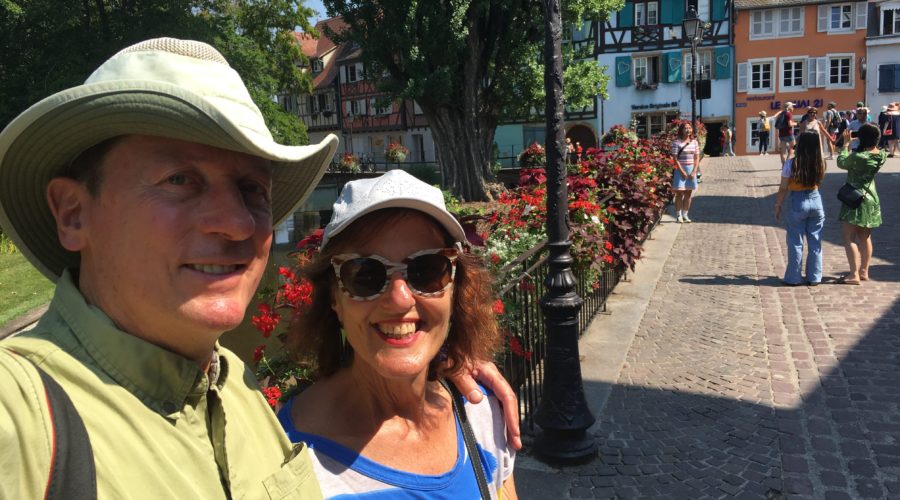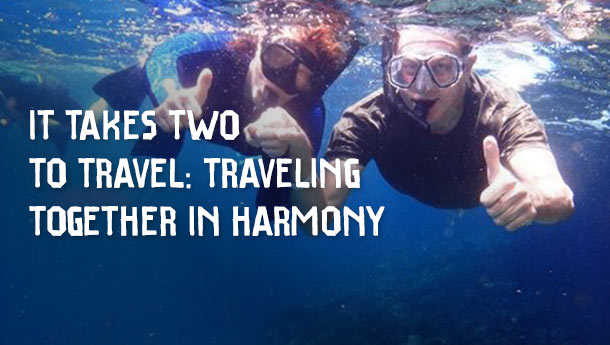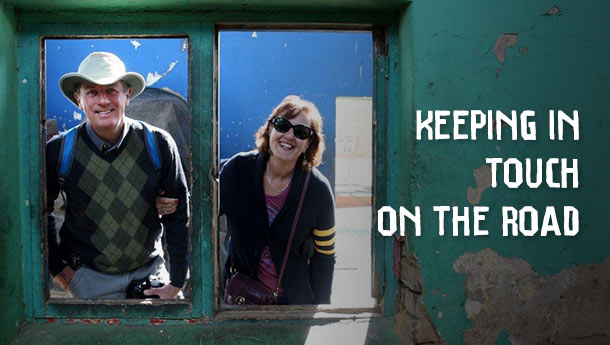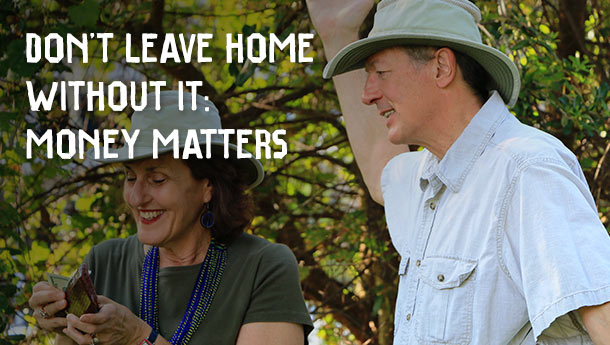A Toast to One of the Most Glorious Wine Routes in France: Alsace
 When Derek and I speak with fellow American wine lovers planning a trip to France, the Loire Valley is always #1 on their list. Yes, the gorgeous vineyards surrounding fairytale chateaus are magnificent, but, listen up oenophiles. France has other exquisite wine routes to explore.
When Derek and I speak with fellow American wine lovers planning a trip to France, the Loire Valley is always #1 on their list. Yes, the gorgeous vineyards surrounding fairytale chateaus are magnificent, but, listen up oenophiles. France has other exquisite wine routes to explore.
The Route des Vins d’Alsace is 105 glorious miles long, and home to more than 4000 winegrowers who produce 140,000,000 bottles a year. Before you say “I’ve tried Gewürztraminers and they’re too sweet for me,” know there’s much more to Alsatian wines. The region sits at an altitude of between 650 to 1300 feet, allowing the vines to enjoy a sunny, hot, dry, semi-continental climate. Blocked by the Vosges range, Alsace’s rainfall is among the lowest in France. The region is blessed with a wide variety of soil types upon which numerous grape varieties thrive. Alsace’s Wine Route stretches from Thann in the south to Wissembourg, north of Strasbourg.
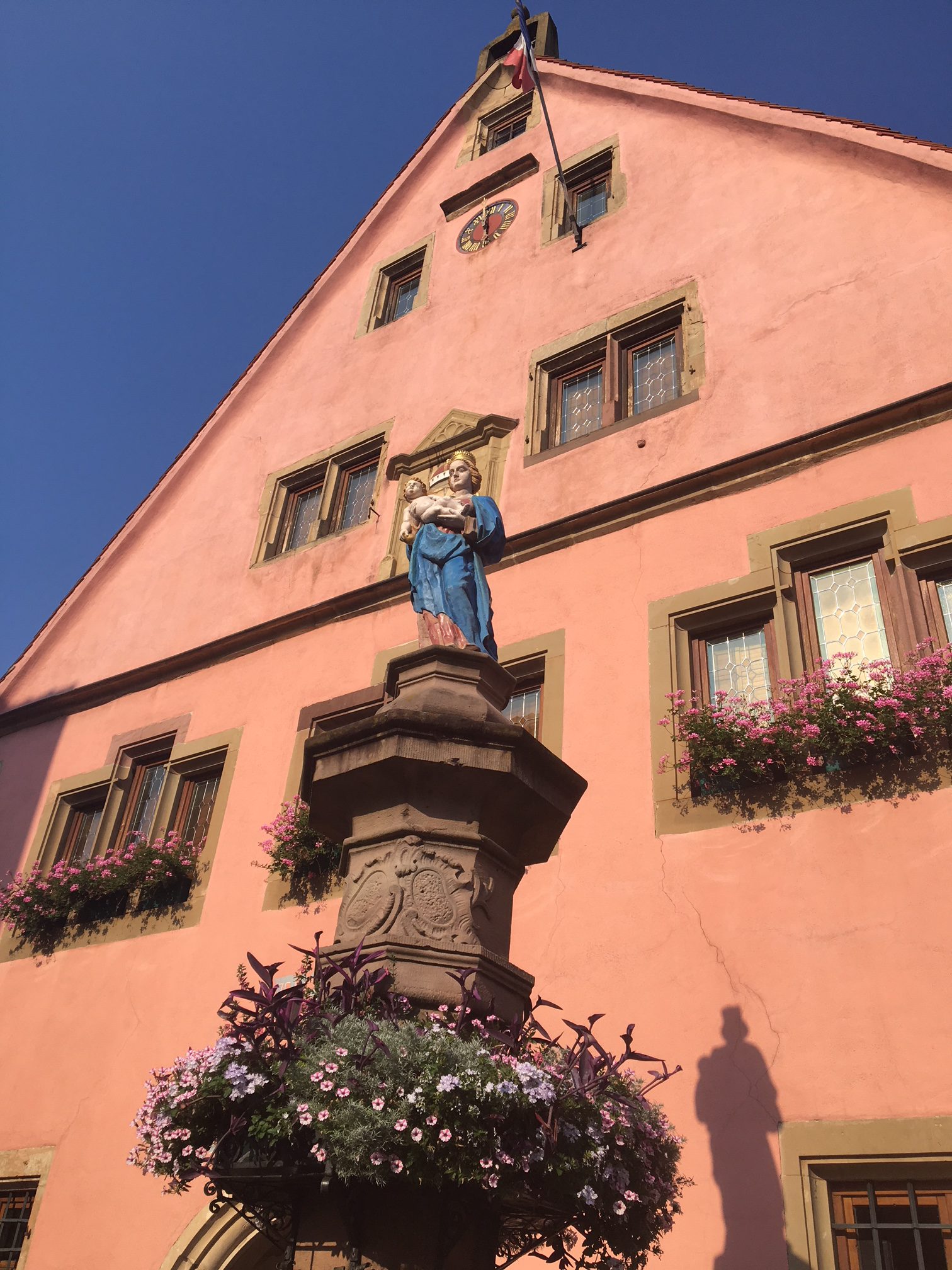 There’s an impressive range of varieties to sample*: Pinot Blanc, Sylvaner (light and discreetly fruity), Riesling, Pinot Gris, Reds (full flavored and aromatic), Roses (dry with soft tannin hints), Muscats (dry and crisp, and unlike any we’ve ever tasted), Gewürztraminers (so much more delicious than the one or two labels you’re able to find in the U.S.), and a sparkly Cremant D’Alsace (delicately fresh with fine bubbles).
There’s an impressive range of varieties to sample*: Pinot Blanc, Sylvaner (light and discreetly fruity), Riesling, Pinot Gris, Reds (full flavored and aromatic), Roses (dry with soft tannin hints), Muscats (dry and crisp, and unlike any we’ve ever tasted), Gewürztraminers (so much more delicious than the one or two labels you’re able to find in the U.S.), and a sparkly Cremant D’Alsace (delicately fresh with fine bubbles).
(*Author’s note: After visiting Sonoma and Napa, Americans are sadly used to having to pay to sample wines at a vineyard. At our first tasting in Alsace, I asked, “Is there a charge to sample your wines?” The proprietress looked at me in horror. She huffed, “But of course not. THIS is France.” Bravo to the way it ought to be. Are you listening, California?)
Here’s a point I can’t stress strongly enough: even if wine tasting is not your thing, you’ll be charmed by Alsace’s picturesque landscapes, the region’s iconic half timbered houses, medieval villages and castles, cycle trails and hiking paths. Simply stated, it’s a Must Visit.
We chose to stay in Beblenheim, north of Colmar. It was ideally situated to explore the region from south to north. We stayed at a comfortable Air Bnb for three nights, and felt we got a great taste (and sip) of the region. Here are towns we toured and highly recommend for your visit.
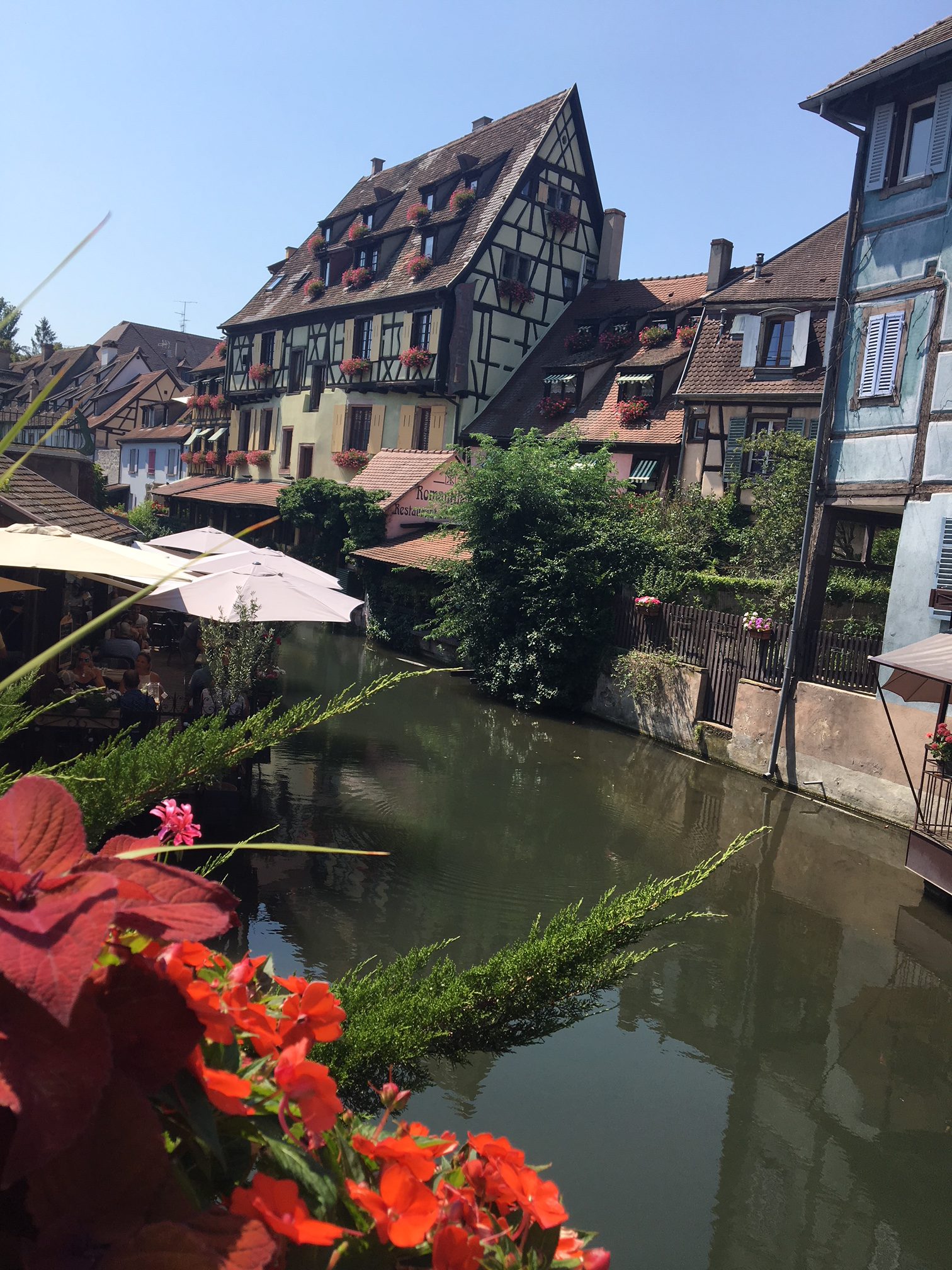 Colmar is the capital of the Alsatian wine producing area, and a town synonymous with art and history. Lovely, flower-strewn canals and parks make it a photographer’s dream. Frederic Auguste Bartholdi, the sculptor of the Statue of Liberty, was born in Colmar in 1834, and you’ll find his museum here.
Colmar is the capital of the Alsatian wine producing area, and a town synonymous with art and history. Lovely, flower-strewn canals and parks make it a photographer’s dream. Frederic Auguste Bartholdi, the sculptor of the Statue of Liberty, was born in Colmar in 1834, and you’ll find his museum here.
 Riquewihr has been designated one of the “Most Beautiful Villages in France.” It does not disappoint. We loved strolling the streets, and peeking in at the colorful shops and boutiques.
Riquewihr has been designated one of the “Most Beautiful Villages in France.” It does not disappoint. We loved strolling the streets, and peeking in at the colorful shops and boutiques.
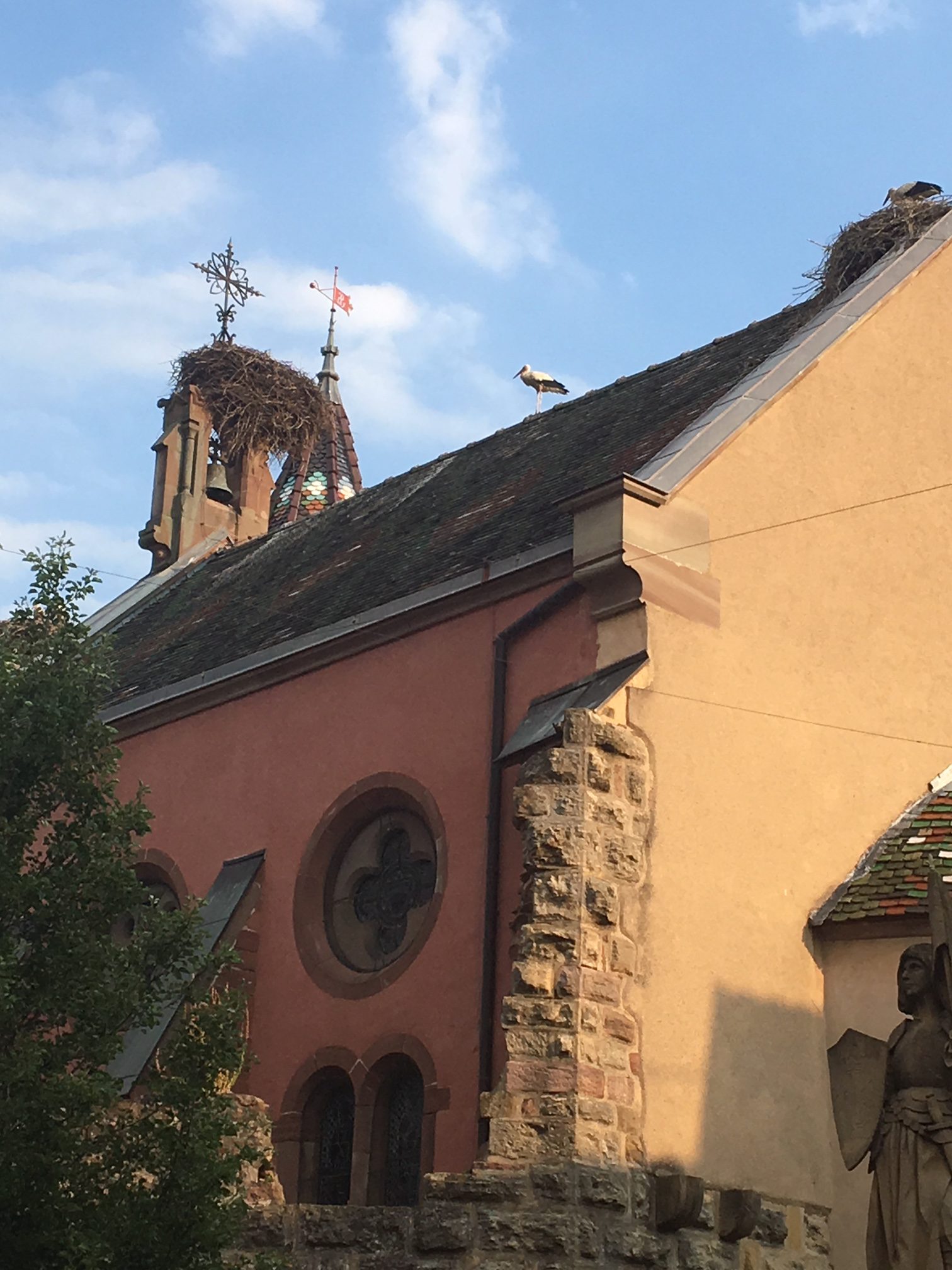 Eguisheim is the town Derek and I loved above all others. The medieval village has narrow, concentric streets that show off half-timbered houses lovingly decorated with flowers. Since 1985, the town’s obsession for flowers has been rewarded with France’s “4-Flower” rating. As you stroll around, you’ll spot ancient inscriptions in the stone lintels. And, look up! If the season’s right, you’ll see storks tending to nests high atop churches and public buildings.
Eguisheim is the town Derek and I loved above all others. The medieval village has narrow, concentric streets that show off half-timbered houses lovingly decorated with flowers. Since 1985, the town’s obsession for flowers has been rewarded with France’s “4-Flower” rating. As you stroll around, you’ll spot ancient inscriptions in the stone lintels. And, look up! If the season’s right, you’ll see storks tending to nests high atop churches and public buildings.
Hunawihr has also earned the title of one of the “Most Beautiful Villages in France.” This charming flowered town offers an interesting history trail, and showcases its church, renaissance Town Hall, Butterfly Garden and Stork Reintroduction Center.
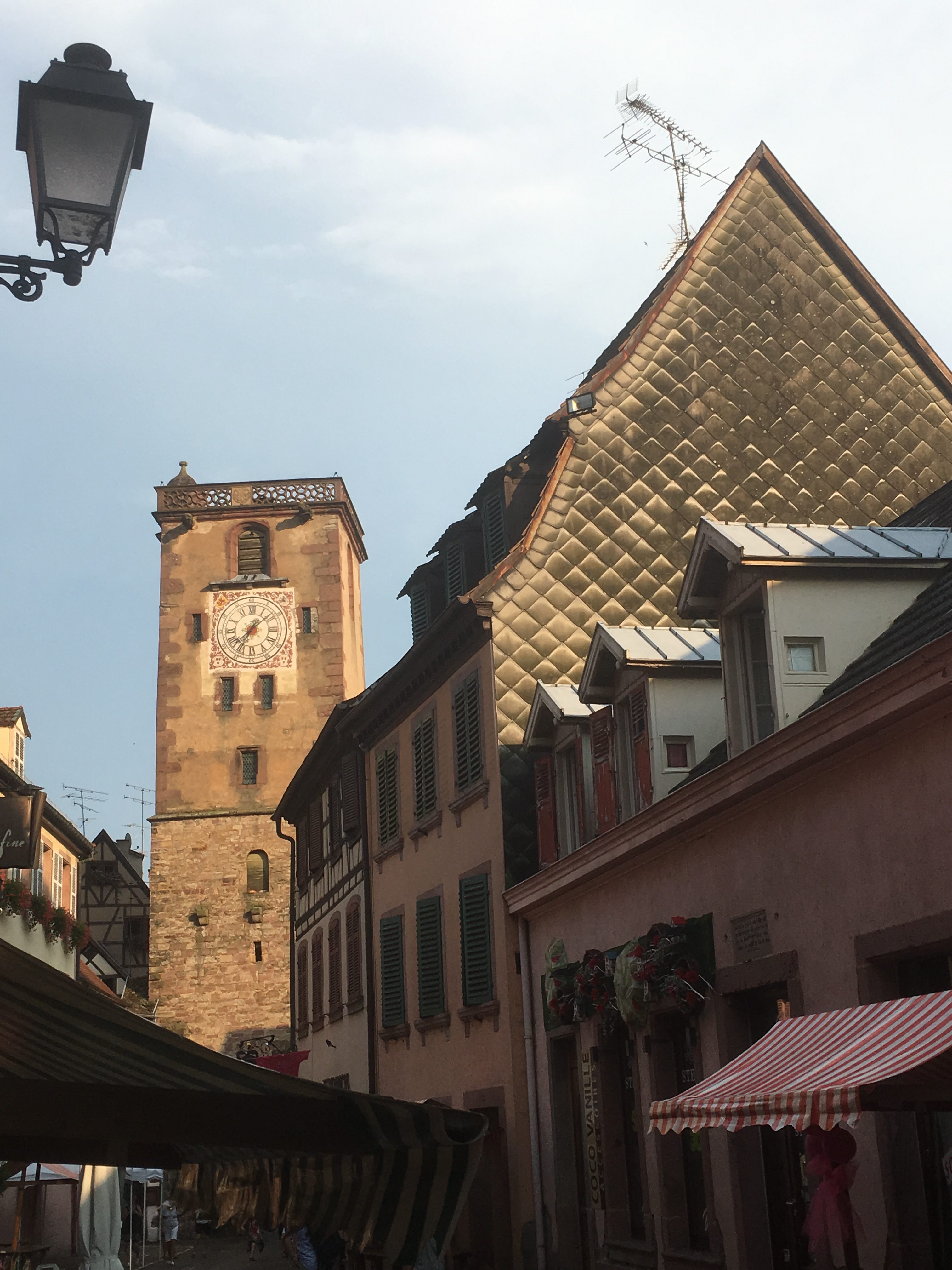 Ribeauville’s streets are lined with 15th to 18th century buildings, offset with squares designed with welcoming fountains. The town has a dynamic cultural life and a full schedule of fairs and festivals. Ribeauville’s vineyards have been turning out exceptional vintages since the Middle Ages, so there are an abundance of cellars and tasting options available.
Ribeauville’s streets are lined with 15th to 18th century buildings, offset with squares designed with welcoming fountains. The town has a dynamic cultural life and a full schedule of fairs and festivals. Ribeauville’s vineyards have been turning out exceptional vintages since the Middle Ages, so there are an abundance of cellars and tasting options available.
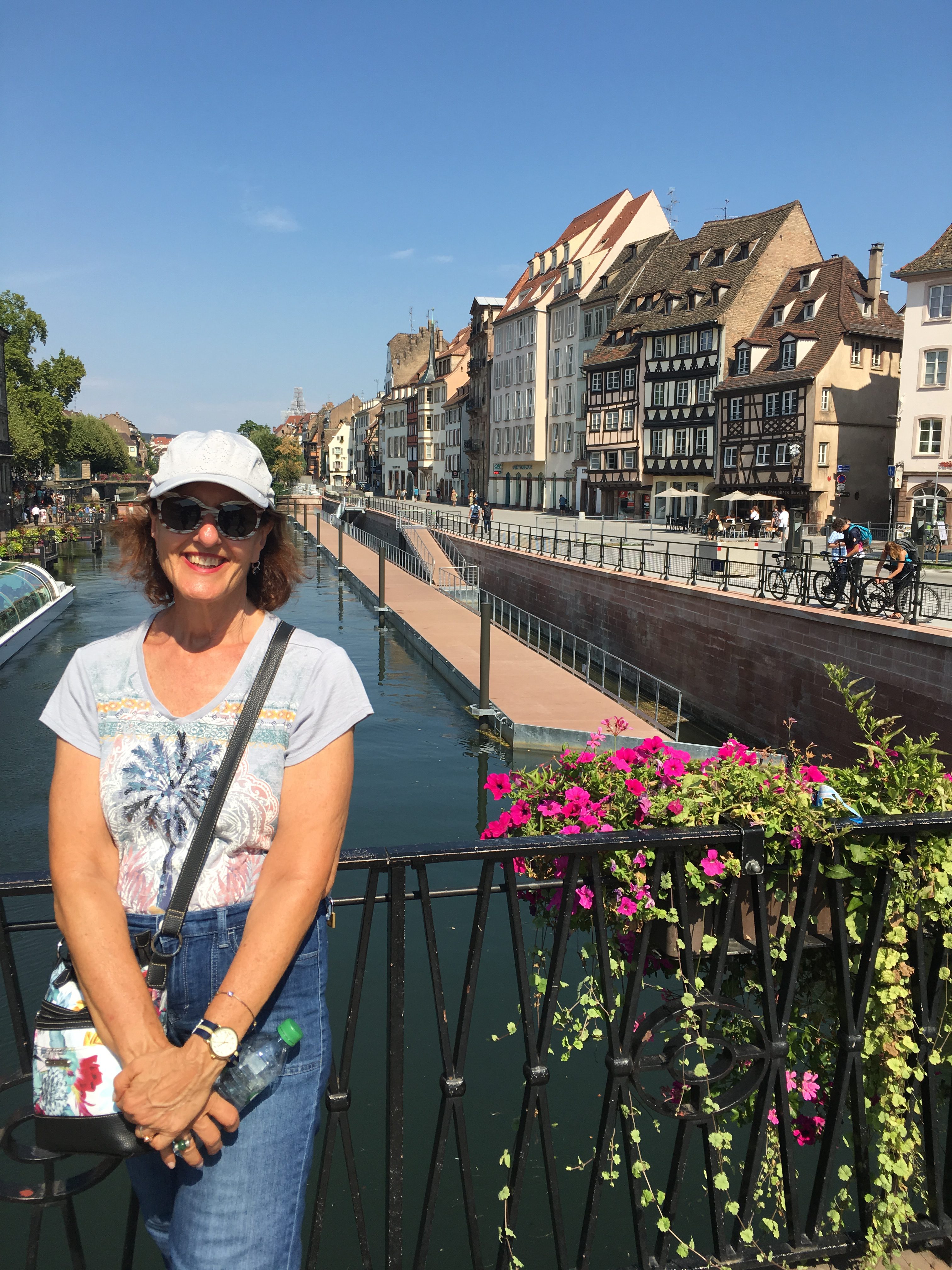 Strasbourg is a vibrant city, the official seat of the European Parliament. Built on a canal system complete with locks, you might take a boat tour to familiarize yourself with the city, although we thought the tram tour offered better views of the city’s landmarks and neighborhoods. Start your visit at Strasbourg Cathedral, one of the finest examples of late Gothic architecture. It was the world’s tallest building for 227 years, from 1647 to 1874. (Today it remains the 6th tallest church in the world.) Make sure to time your visit to be in the Cathedral at 12:30 pm. At that magical hour, you can delight in the main display of the Astronomical Clock and watch its amazing automatons in full show. Strasbourg has wonderful markets, Monday to Saturday – everything from food to flowers to books. Find the complete list at http://www.strassburg.eu/en/markets-in-strasbourg. We visited on a Saturday, and I found some affordable treasures at the Flea Market situated at Place de l’Etal to Place de la Grande Boucherie, close to the Cathedral.
Strasbourg is a vibrant city, the official seat of the European Parliament. Built on a canal system complete with locks, you might take a boat tour to familiarize yourself with the city, although we thought the tram tour offered better views of the city’s landmarks and neighborhoods. Start your visit at Strasbourg Cathedral, one of the finest examples of late Gothic architecture. It was the world’s tallest building for 227 years, from 1647 to 1874. (Today it remains the 6th tallest church in the world.) Make sure to time your visit to be in the Cathedral at 12:30 pm. At that magical hour, you can delight in the main display of the Astronomical Clock and watch its amazing automatons in full show. Strasbourg has wonderful markets, Monday to Saturday – everything from food to flowers to books. Find the complete list at http://www.strassburg.eu/en/markets-in-strasbourg. We visited on a Saturday, and I found some affordable treasures at the Flea Market situated at Place de l’Etal to Place de la Grande Boucherie, close to the Cathedral.
We talk about different French Wine Routes in a separate blog. But start to plan your Alsatian trip now, visit at https://www.alsace-wine-route.com/en




